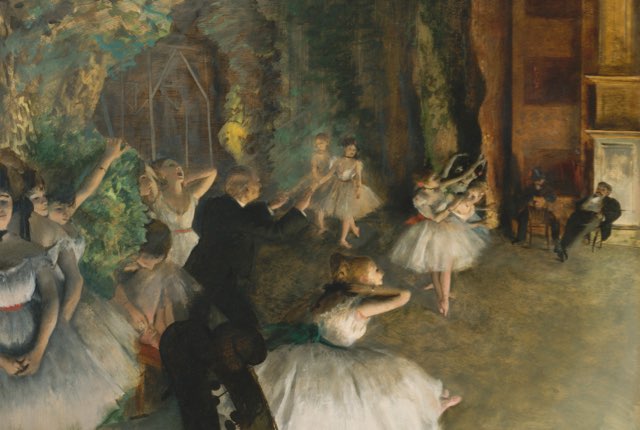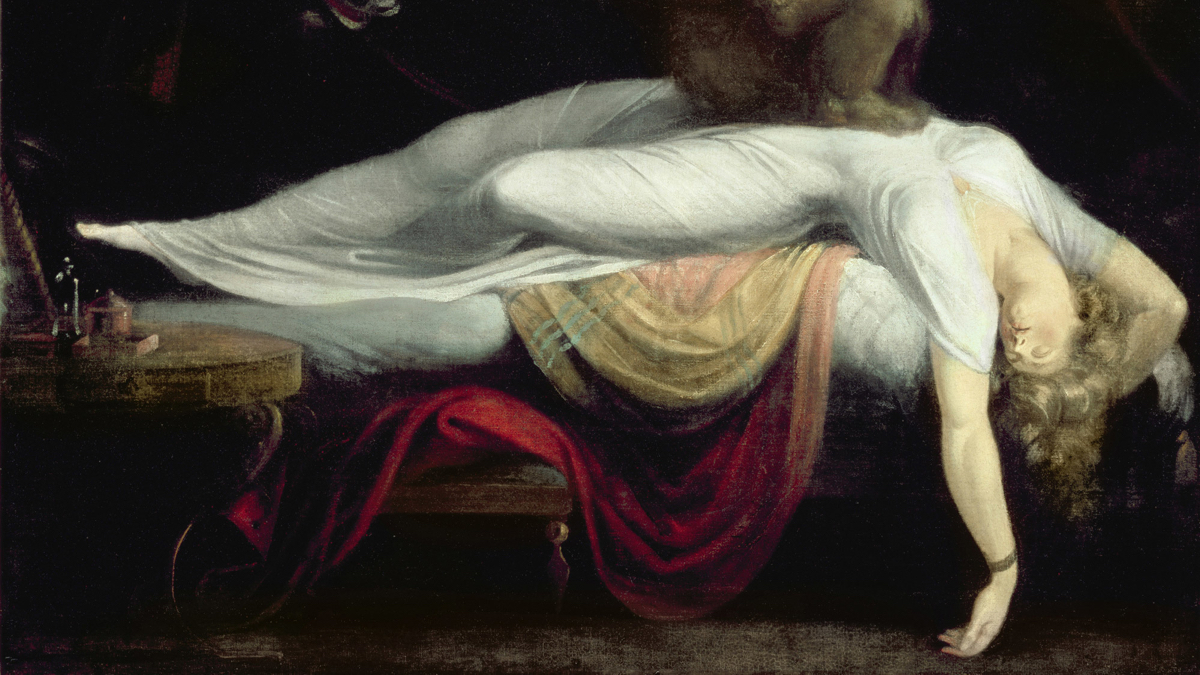
The Scary Truth Behind Degas's Ballet Paintings
Known for his whimsical Impressionist portrayals of ballet dancers, Hilaire-Germain-Edgar Degas is a household name. The whirs of softly colored tutus and strokes of pink to flush each figure’s cheeks evoke a sense of joyful voyeurism, as if each viewer of the painting was sitting in the auditoriums depicted. Behind the glitz, glamor and youthful innocence, however, lies a darker truth. With Artsper, dive into the scary story behind the iconic Degas ballet paintings.
Some history
It’s important to view Edgar Degas’s ballet paintings in the context of the French social scene at the time of their painting. Picture it: it’s the 1870s in Paris, the Belle Époque. It’s a time of peace, prosperity and great economic growth following the end of the Franco-Prussian War. Shopping centers are opening across the city as fashion, art and culture become synonymous with Paris. The construction of the famed Parisian opera house, the Palais Garnier, was just completed and dancers are ready to take the stage. Impressionism is in full swing, with the first official exhibition of the Impressionists— Claude Monet, Camille Pissarro, Pierre-Auguste Renoir, Paul Cézanne and Edgar Degas among others— taking place in Paris in 1874.
With so many great advancements came room for pleasure. The wealthier citizens of Paris could more frequently enjoy cultural events like opera and ballet, as evidenced through many Impressionist artworks. If you look closely, however, these paintings might tell two stories: one of opulence and another of optics. It is alleged that in Edgar Degas’s ballet paintings, observers can note the suggestion of the ballerinas as sex workers and their audience as patrons.

The rehearsal rooms featured in Degas ballet paintings
In The Rehearsal of the Ballet Onstage (1874), the dancers flurry across the canvas in their practice before a show. In the center, their instructor or choreographer directs them. To the right, just offstage, two men sit and observe the practice. The power of the men is apparent as they sit in comfortable leaning positions.
The popularity of ballet during the 1870s was fading and dancers, many coming from lower-class backgrounds, resorted to other means to make money. Sex work was often encouraged by the dancer’s families coming out of hard economic times during the war. Ballet, and in turn sex work, provided a ticket to financial freedom. In The Rehearsal of the Ballet Onstage, patrons watch the girls dance and afterwards, presumably go with them to one of the back rooms that were often used for dance practice.

The star
The image that became the emblem of the dark side of the Degas ballet paintings was Ballet (1876). Often called The Star due to its similar nature to another work by that name, Ballet features a singular ballerina on stage. The foreground is taken up by a young dancer garbed in a flowing white tutu and flowers. Believed by some to be the Spanish dancer Rosita Mauri, the girl’s identity is not confirmed. In the background, swathes of color make up the set, the curtain and the other dancers. A distinguishable figure dressed in a black tuxedo breaks up the color. His face obscured, the figure’s body is imposing and almost ominous.
It is rumored that the young ballerinas who spent the most time with their backstage patrons were given better roles in their on-stage performances. This realization makes images like Ballet shine in a darker light.

Subtle stories in Degas ballet paintings
While it is impossible, of course, to know the real happenings behind each one of the Degas ballet paintings, the atmosphere behind each is palpable. In Orchestra Musicians (1872), the young dancers are shown from the perspective of the pulpit. The main ballerina takes her bow as the others commune behind her. Older musicians, while playing their music, seem transfixed on the stage. The element of voyeurism in Degas’s work is undeniable here.
Often featuring men on the sidelines of his images, in Orchestra Musicians they are brought to the forefront. Although it is the girls on the stage, the Palais Garnier was not designed for them, but the men. The many back practice rooms throughout the theatre were installed with patrons in mind. The young dancers were viewed simply as a product of the show itself. Despite this image not showing the patrons themselves, it provides a clear dichotomy between the older men in attendance and the young dancers. Many of the dancers, called “les petits rats” or little rats, were no older than 14. The children shine in the images from the Belle Époque, but their existence was likely a difficult one.

A warning
Not all that glitters is gold… Degas ballet paintings, while beautiful, serve as a reminder to look behind the curtain. Relics of the Belle Époque, the dance artworks will forever be revered for their beauty and their melancholy. Learn more about the mysteries of art history on Artsper!

About Artsper
Founded in 2013, Artsper is an online marketplace for contemporary art. Partnering with 1,800 professional art galleries around the world, it makes discovering and acquiring art accessible to all.
Learn more













